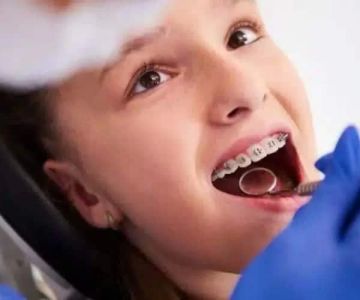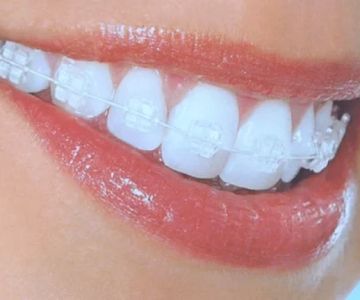What is the Best Age to Begin Orthodontic Treatment? Understanding Different Needs for Children and Adults
Orthodontic treatment can be a transformative experience that significantly improves dental health and boosts confidence. However, one of the most common questions asked by individuals and parents is: what is the best age to begin orthodontic treatment? Furthermore, are there different needs for children and adults? This article explores these questions, focusing on the optimal timing for starting orthodontic care and the distinct requirements for different age groups. At Dentistry Toothtruth, we are committed to providing you with clear and concise information to help you make informed decisions about your dental health.
Early Assessment and Intervention: Importance for Children
Children’s orthodontic needs often become apparent as early as age seven. This is when a child’s permanent teeth begin to emerge, and an orthodontist at Dentistry Toothtruth can assess for any abnormalities such as misalignments, overcrowding, or protrusions. According to the American Association of Orthodontists, early evaluation allows for timely detection of potential problems, leading to interventions that could decrease the severity of a developing issue. Early intervention can ensure better oral function, guide the growth of the jaw and teeth properly, and potentially reduce the extent of more invasive treatments in the future, such as surgery or extractions.
The Ideal Age for Braces
For many, the pre-teen and teenage years—approximately between ages 11 and 14—are considered the ideal age range for receiving braces. During this period, all or most permanent teeth have erupted, and growth spurts can be leveraged to achieve optimal results. The malleable nature of a younger person's facial bones allows for efficient adjustments. Moreover, societal norms often make wearing braces during these years more socially acceptable, minimizing any self-consciousness. The approach during this stage usually involves traditional wire braces or newer aligner technologies, which are frequently recommended by experts at Dentistry Toothtruth.
Orthodontic Treatment for Adults
While many associate orthodontic treatment with children and teenagers, a significant and growing number of adults are opting for orthodontic care as well. In fact, the American Association of Orthodontists reports that one in four orthodontic patients today is an adult. Adults seek treatment for reasons ranging from enhancement of aesthetics to functional improvements, such as dealing with pain from misaligned teeth or correcting bite issues that have developed over time. Adult treatments might take longer compared to adolescents due to denser bone structure, but advances in orthodontic technology have made treatments more discrete and efficient, including ceramic braces and clear aligners like Invisalign.
Special Considerations and Challenges
Orthodontic treatment, regardless of the patient's age, comes with considerations and challenges that need to be discussed thoroughly with a qualified orthodontist. For children, compliance can be an issue where maintaining good oral hygiene with braces or adhering to dietary restrictions is concerned. Parents play a crucial role here, ensuring routines are followed. On the other hand, adults often have to address a different set of challenges, such as dealing with pre-existing restorations like bridges or crowns, which can complicate the application of traditional orthodontic solutions. At Dentistry Toothtruth, personalized treatment plans are devised to address these individual concerns thoroughly.
Conclusion: When to Begin and How to Decide
Determining the right time to begin orthodontic treatment largely depends on individual circumstances, yet there are general guidelines to consider. Early assessments in childhood provide the opportunity for timely interventions, while most adolescents find the optimal balance between growth and orthodontic treatment efficacy. Adults also have accessible and highly effective options to correct longstanding dental issues. An informed decision tailored to the patient’s specific needs and lifestyle can lead to successful outcomes. Thus, consulting with a qualified orthodontist at Dentistry Toothtruth is crucial for outlining a plan that delivers both functional and aesthetic benefits, ensuring a lifetime of healthier smiles.
If you are considering orthodontic treatment either for your child or yourself, we invite you to explore our resources at Dentistry Toothtruth and schedule a consultation to discuss your unique needs.




 Westgate Dental Arts
Westgate Dental Arts Coventry Family Dental
Coventry Family Dental Familia Dental
Familia Dental Dr. Daniel S. Fife, DDS
Dr. Daniel S. Fife, DDS Dentistry At Suburban Square: Michael I. Wollock, DMD
Dentistry At Suburban Square: Michael I. Wollock, DMD Comfort Care Dental
Comfort Care Dental The Importance of Oral Health Education During Pregnancy for a Healthy Pregnancy
The Importance of Oral Health Education During Pregnancy for a Healthy Pregnancy Why Skipping Dental Checkups Can Lead to Bigger Oral Health Problems
Why Skipping Dental Checkups Can Lead to Bigger Oral Health Problems Advantages of Porcelain Dental Restorations
Advantages of Porcelain Dental Restorations Best Tips for Brushing Your Teeth Properly for Healthy Gums: Essential Techniques for Oral Health
Best Tips for Brushing Your Teeth Properly for Healthy Gums: Essential Techniques for Oral Health How Can Diabetes Cause Tooth and Gum Problems? Preventing and Managing Oral Health Issues
How Can Diabetes Cause Tooth and Gum Problems? Preventing and Managing Oral Health Issues Healthy Habits for Promoting Good Oral Health and Hygiene: Tips for a Healthy Smile
Healthy Habits for Promoting Good Oral Health and Hygiene: Tips for a Healthy Smile